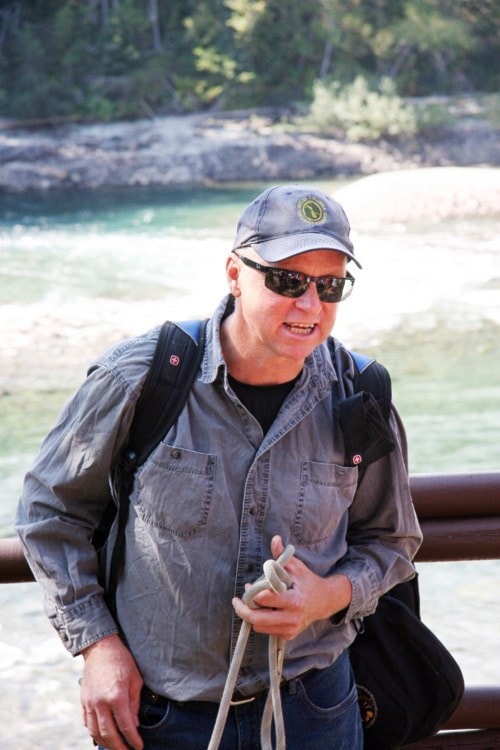Margot Venema
Steve Maricle, small lakes biologist with the Ministry of Forests, Lands and Natural Resource Operations, was the second host in the Wells Gray Heritage Year series to take a group on a Wells Gray Park tour, this time to talk about the fish that inhabit the Wells Gray.
Steve grew up in Kamloops and as long as he can remember he has had a passion for fish and fishing. He has worked with fisheries for 28 years where for the last 13 years he has managed small lakes.
On Sept. 9, the fish tour started at the trailhead of Bailey’s Chute, where Maricle explained what fish can be seen at the viewing platform.
“There are three types of salmon that run up this river,” he said. “The sockeye, the coho, and the chinook.”
Their runs are not huge, approximately 3,000 - 5,000 a year. Only in some big years you will see 10,000 at most.
“Bailey’s Chute is interesting because it shows evolution in progress. This is the first impassable barrier for the salmon and the end of the line for the chinook right now,” he said. “It is expected that in a few 100 years they will make it up the chute.”
In evolution salmon needs to earn the ability to jump the barrier.
“If you go in and help you mess up the order of nature and you may not like the outcome,” Steven said. “Only the strongest highest jumpers will be able to do it.”
If the salmon did not feel they had to push themselves to come up the river a bit further every time then nothing would evolve.
After Bailey’s Chute, Steve along with Trevor Goward and Gy Ovenden took the group on a hike of the first half of the West Lake Trail where they stopped at various spots along the route to point out unique features of the landscape. They shared interesting facts about the forest.
“This area has 42-45 days of lightning a year which is the highest frequency of lightning strikes in B.C.,” said Trevor Goward. Two big forest fires in 1896 and 1926 greatly affected the park and its wildlife. The fires burnt down a total of 90,000 hectares.
One of the first Europeans to come into the park looked at putting in a railway and along the route he took notes. He recorded the animals he saw but he didn’t see any moose. They only came after the forest fires because they like the young forest. The mountain caribou, on the other hand, like old growth forest and so they lost their habitat after it burned down. When the moose, deer, and their natural predators moved in, it triggered the decline of the caribou, but as the forest grows up and ages it is expected that the caribou will come back.
If the forest would be logged now then a habitat for moose, deer, and their predators would be created again and then the caribou recovery would not occur. From a global perspective it is very important to see if the recovery can happen.
Steve Maricle concluded the day at the Upper Clearwater Community Hall with a presentation for a small audience about the big and small lakes in the park and the fish that inhabit them.
